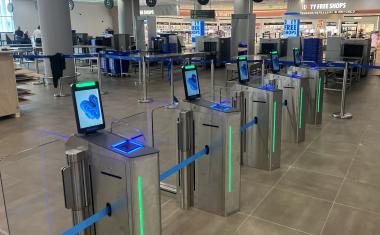Security markets across countries will recover at a different pace but the outlook is promising, finds Frost & Sullivan

Frost & Sullivan’s recent analysis, Post-Pandemic Growth Opportunity in the Global Security Industry, finds that the security industry has tremendous investment opportunities despite the economic slowdown witnessed due to COVID-19. Under an aspirational recovery scenario, the global security industry is likely to grow at a compound annual growth rate (CAGR) of 4.3%, garnering revenue of $140.60 billion by 2025 from $109.30 billion in 2019. The conservative forecast scenario predicts that the industry will generate $131.01 billion between 2019 and 2025, at a CAGR of 3.1%. In the pre-COVID-19 forecast, the industry was estimated to increase at a CAGR of 7.1%, generating revenue of $164.97 billion over the forecast period.
“COVID-19 will cause a brief slowdown in the security market after almost a decade of uninhibited progress,” said Danielle VanZandt, Aerospace, Defense & Security Industry Analyst at Frost & Sullivan. “Additionally, while some security sectors may find themselves experiencing a slower recovery than others, much of the industry will witness a shift to more service-based solution offerings after years of hesitance by customers to adopt these solutions.”
VanZandt added: “The key security markets such as disaster management, banking and finance, and airport security will recover at a different pace, and the time taken to return to pre-crisis spending levels will also vary significantly. Markets that will record higher-than-average CAGRs during the recovery period include ports (4.5%), disaster management (4.0%), first responders (4.0%), and mass transit (4.0%).”
Despite a marginal slowdown expected in 2020 and 2021, strong demand-side trends will present immense development potential for security market participants. The following trends are forecast to generate growth opportunities in this sector:
- Digitalization priorities: Remote/cloud-connected access to security systems and monitoring tools will witness a drastic rise in demand as manned guarding will become extremely limited due to stay-at-home orders issued by state or federal governments, and likely not recover once those orders expire.
- Emphasis on contactless technologies: In the post-pandemic period, contactless technologies such as biometrics, remote access and authentication, and multi-use analytics solutions will attract investments.
- Plug-and-play surveillance: Customer willingness to deploy plug-and-play surveillance equipment over permanent system additions due to cost-effectiveness will offer vendors repeat business opportunities.
- Sensors-to-action: Vendors must prioritize the development/enhancement of data analytics and sensor networks' capabilities to provide increased value to customers without having to purchase new solutions or equipment.
Post-Pandemic Growth Opportunity in the Global Security Industry is the latest addition to Frost & Sullivan’s Aerospace, Defense & Security research and analyses available through the Frost & Sullivan Leadership Council, which helps organizations identify a continuous flow of growth opportunities to succeed in an unpredictable future.















